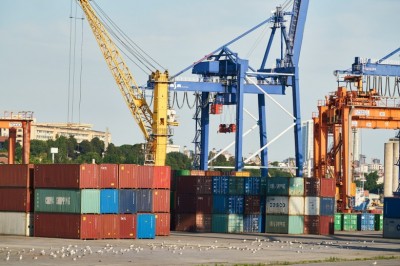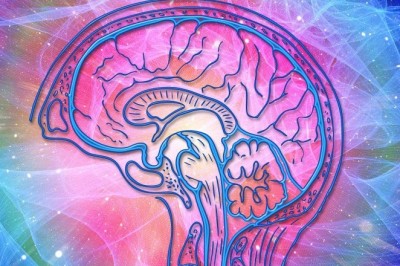TAX AND NON-TAX REVENUE
Q1: Explain the sources of public revenue?
Ans: SOURCES OF PUBLIC REVENUE:
*INTRODUCTION:
~ Public finance is the study of the financial operations of the state and is concerned with the income and expenditure of public authorities and the adjustment of one with the other.
~ Public finance includes public revenue, public expenditure and public debt.
~ Public revenue is the income of the Government raised from all sources in order to meet the public expenditure.
*MEANING:
~ Public revenue refers to government revenue. The important sources of public revenue are taxes, sale of public goods and services, fees, fines, donations, etc.
~ The source of public revenue can be : TAX REVENUE, NON-TAX REVENUE.
*SOURCES:
A) TAX REVENUE:
~ Taxes are the most vital sources of public revenue.
~ ‘A tax is a compulsory levy imposed by a public authority on persons and organizations to meet public expenditures’
~ Thus, the above definition highlights the following points:
i) A tax is the compulsory payment made to the government. Refusal to pay the tax is a punishable offence.
ii) Every tax involves some sacrifice on part of the tax payer.
iii) A tax is not a fine or penalty.
~ The major share of revenue receipts of the Central Government comes from taxes.
~ Taxes can be broadly divided into: DIRECT TAXES, INDIRECT TAXES
*DIRECT TAXES:-
~ Direct taxes are imposed on the income and wealth of individuals or organizations.
~ They are personal income tax, wealth tax, corporate tax, gift tax, etc.
~ The impact and incidence of direct taxes are on the same person.
~ Direct taxes are progressive in nature and the rate of tax increases along with the tax base.
~ Progressive direct taxes are instrumental in reducing income inequalities especially in developing countries.
~ The following are the major direct taxes:
a)PERSONAL INCOME TAX:
~ Personal income tax is levied on the total income tax of the individual after some permissible deductions. At present, the personal income tax rates are as follows:
INCOME (IN RS) RATE
0-1,60,000 0%
1,60,000 – 5,00,000 10%
5,00,000 – 8,00,000 20%
8,00,000 and above 30%
~ Senior citizens are exempted from tax on income up to Rs: 2,40,000.
~ Females are exempted from tax on income upto Rs: 1,90,000
~ In the year 2009-2010, Personal Income Tax contributed 17.6% of the Total Tax Revenue. (Rs:1,12,850 crores)
b) CORPORATE TAX:
~ Corporate tax is levied on the profits registered corporate firms.
~ Since a company is given a legal status, corporate tax is a direct tax.
~ At present (2010), the corporate tax rates are:
^ INDIAN FIRMS – 30% + 7.5% surcharge.
^ FOREIGN FIRMS – 40% + 2.5% surcharge.
~ In the year 2009-2010, Corporate Tax contributed to 40% of the Total Tax Revenue
(Rs: 256725 crores).
c) OTHER DIRECT TAXES:
~ The other direct taxes include expenditure tax, interest tax, wealth tax, gift tax, etc.
~ The share of these taxes is negligible.
*INDIRECT TAXES:
~ Indirect taxes are imposed on commodities.
~ They are sales tax, service tax, excise duty, customs duty, VAT, etc.
~ The impact and incidence of indirect taxes may be on different persons. The person on whom the tax is imposed bears the impact, while the person who ultimately pays it bears the incidence.
~ In direct taxes are regressive in nature because the burden of tax is ultimately shifted to the consumers who pay the same amount of tax irrespective of their income level.
~ Indirect taxes play an important role in developing countries due to low income levels.
~ The following are the major indirect taxes:
a) EXCISE DUTY:
~ It is levied on goods manufactured and consumed in India.
~ Excise duty is the single largest source of government revenue.
~ There has been a declining trend in the rates of excise duty.
~ In 2009-2010, excise duty contributed to 16.6% of the Total tax revenue (Rs: 1,06,477 crores)
b) CUSTOMS DUTY:
~ It is levied on imports and on selective exports.
~ From revenue point of view, customs duty has limited importance.
~ The peak rate of customs duty is 10%.
~ In 2009-2010, customs duty contributed to 15.3% of total Tax Revenue. (Rs:98,000 crores)
c) SERVICE TAX:
~ It is levied on services provided by certain categories of firms / persons / agencies.
~ Service tax collections have steadily increased.
~ In 2009-2010, it contributes to 10.1% of total tax revenue. (Rs:65,000 crores)
d) GOODS AND SERVICES TAX: (GST)
~ This includes a combination of all taxes like service tax, excise tax and VAT. (proposed to be incepted in 2011).
~ It will cover goods and services in almost all sectors and industries.
~ It will simplify the complexities of the system of levies on goods and services.
*NON-TAX REVENUE:
~ Non Tax Revenue includes all revenues other than taxes, accruing to the Government.
~ These are internally generated funds.
~ These sources of revenues are:
^ Administrative revenues.
^ Commercial revenues.
^ Grants and gifts.
~ The following are the main sources of non-tax revenue.
a)SPECIAL ASSESSMENT:
~ It is also known as betterment levy.
~ It is levied on certain members of the community who get the benefits of certain government activities or public projects like roads / railways projects, construction of park, etc.
~ Thus, due to public expenditure, the value of land / property appreciates and they experience ‘unearned increments’ in their asset holdings.
~ So, the government charges special assessment levy on such properties.
b) SURPLUSES OF PUBLIC ENTERPRISES:
~ The government has set up public sector enterprises that are involved in commercial activities.
~ The surpluses of these enterprises are an important source of non-tax revenue.
~ These revenues are in the form of profits and interests and are termed as commercial revenues.
~ The government also gets dividend from PSUs.
c) FEES:
~ Fees are an important source of administrative non-tax revenue charged by Government authorities for rendering services to the members of the public.
~ There is no compulsion involved in case of fees. All those who make use of these services pay the fees.
~ Fees are charged for obtaining licences, passports or registrations, filing of court cases, etc.
d) FINE AND PENALTIES:
~ These are an other sources of administrative non-tax revenues.
~ They are imposed on public as a form of punishment for not observing certain rules and regulations.
~ They are not expected to be a major source of revenue to the Government.
e) GRANTS AND GIFTS:
# Grants are financial aids.
~ They are given so that a public authority is able to perform certain activities for social development.
~ They are made by a higher public authority to a lower one.
~ For eg: World Bank gives grants to Central Government, Central Government gives grants to State Government, etc.
~ There is no repayment obligation in case of grants.
# Gifts and donations are voluntarily made by individuals, organizations or foreign governments to the Central Government.
~ Such gifts are made out of patriotic feelings or at the time of crisis or national calamities.
~ Gift cannot be considered as a regular source of revenue.
*CONCLUSION:
~ Thus, the tax system plays an important role in generating Public Revenue. Also, the non-tax income is important in raising revenue.
~ The Public Revenue so generated is used to meet Public Expenditure.
Q2: Discuss the changing trends in tax and non-tax revenue in India.
Ans: CHANGING TRENDS IN TAX AND NON-TAX REVENUE.
*INTRODUCTION:
~ The Government raises finance to meet its expenditures from tax and non-tax revenue sources.
~ In fact, Government expenditure exceeds government revenue, resulting in Government deficit.
*CHANGES:-
~ The important trends in tax and non-tax revenue are discussed below:-
A) TAX REVENUE:
~ The tax-structure in India is well developed and the power to levy taxes and duties is distributed as follows:
^ CENTRAL GOVERNMENT: It levies taxes on income (except agricultural income), customs duty, central excise duty and service tax.
^ STATE GOVERNMENT: It levies taxes on agricultural income, Value Added Tax (VAT), Stamp Duty, state excise duty, land revenue tax and professional tax.
^ LOCAL GOVERNMENT BODIES: They levy property tax, Octroi and tax for utilities like water supply, Sanitation etc.
~ Since liberalization Indian tax structure and system have undergone certain reforms.
~ These reforms included reduction in rates of all major taxes, broadening the base of all taxes, simplifying laws and procedures and modernization of administrative and enforcement machinery.
~ Some of the important trends in tax revenue are:
# TRENDS IN GROSS TAX-REVENUE AND TAX-GDP RATIO:
~ The collection of taxes has increased due to reduction of tax rates, simplification of procedures and a high growth rate of GDP.
~ The share of Gross tax revenue of the Central Government as a % of GDP has remained constant between 9% to 10%.
~ This is very low in comparison to the developed nation as well as many developing nations.
YEAR TAX REVENUE PERCENTAGE OF GDP
1990-1991 57,576 10%
2002-2003 216266 8.8%
2009-2010 641979 10.4%
# TRENDS IN DIRECT AND INDIRECT TAXES:
~ Before liberalization, the indirect taxes contributed more than 70% to the total tax revenue.
~ However, since 1990-91 (post-liberalization), this trend got reversed due to economic development.
~ The direct taxes contributed significantly due to increase in corporate tax and personal income tax.
YEAR DIRECT TAXES (%) INDIRECT TAXES (%)
1990-1991 19.1 80.9
2004-2005 43.3 56.1
2009-2010 57.7 42.0
# TRENDS IN DIRECT TAXES:
~ The share of direct taxes in the tax revenue of the Government has increased over the years.
~ The Direct Tax Code will replace the Income and Wealth Tax Laws and will be affective from April 1, 2011.
~ Major Direct taxes are:-
i)CORPORATE INCOME TAX:-
~ It is the most significant direct tax in terms of revenue collection and contribution to total tax revenue.
~ The contribution of corporate tax has increased greatly after liberalization:
YEAR % OF TOTAL TAX REVENUE Rs.CRORES
1990-1991 9.3 5335
2004-2005 27.1 82680
2009-2010 40.0 256725
ii)PERSONAL INCOME TAX:
~ The collection of personal income tax has also increased greatly since 1990-1991.
~ The contribution of personal income tax as a percentage of total tax revenue has also increased.
YEAR % OF TOTAL TAX REVENUE Rs.CRORES
1990-1991 9.3 5371
2004-2005 16.2 49268
2009-2010 17.6 112850
# TRENDS IN INDIRECT TAXES:
~ The share of indirect taxes in the tax revenue of the Central Government has gradually declined.
~ The trends in the share of three main indirect Taxes are stated as follows:-
# EXCISE DUTY:
YEAR Rs CRORE % OF TOTAL TAX REVENUE
1990-1991 24,514 42.6
2004-2005 99,125 32.5
2009-2010 1,06,477 16.6
Increased Significantly Declined
#CUSTOMS DUTY:
YEAR Rs CRORE % OF TOTAL TAX REVENUE
1990-1991 20,644 35.9
2004-2005 57,611 18.9
2009-2010 98,000 15.3
Increased Declined
# SERVICE TAX (INTRODUCED IN 1994-95)
YEAR Rs CRORE % OF TOTAL TAX REVENUE
1990-1991 862 0.8
2004-2005 14,200 4.7
2009-2010 65,000 10.1
~ INCREASED SIGNIFICANTLY due to rapidly growing service sector.
B) NON-TAX REVENUE:
~ Non-tax revenue includes internally generated funds.
~ Greater attention has to be paid to raise funds through non-tax revenues because of the limitations of raising revenue through taxes.
~ In 2002, the government set up the Non-Tax Revenue unit to advise the government to increase the collection of Non-Tax Revenue.
~ Since non-tax revenues broaden the sources of revenue, they are vital in meeting the growing fiscal deficit and funding infrastructure investments.
YEAR NON-TAX REVENUE(Rs Crore) % of GDP
1990-1991 11,976 2.1
2002-2003 72,290 3.0
2009-2010 1,40,279 2.3
INCREASED
~ SHARE OF TAX REVENUE AND NON-TAX REVENUE (%):
YEAR TAX REVENUE NON-TAX REVENUE(%)
1990-1991 78.2 21.8
2004-2005 73.5 26.5
2009-2010 77.2 22.8
* CONCLUSION:
~ Thus, there are various changes in the trends of tax and non-tax revenue.
~ These changes are brought about for meeting the ever-increasing public expenditure and public deficit.
























